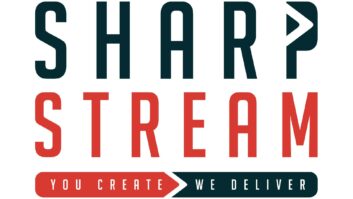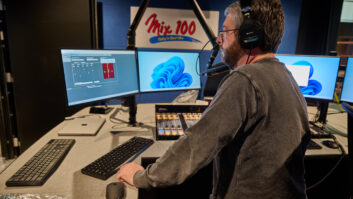
The Sonifex S1 installed at Radio Plymouth.
SURREY, England The new Sonifex S1 compact professional mixer fills a gap in the market that previously had been addressed only through one of a number of compromises — sometimes ones that cause considerable confusion among users.
When Radio Studio Services is building small radio stations, we often are presented with the challenge of providing adequate facilities in a newsbooth or editing bay without spending a fortune. The S1 covers many of these needs by offering a wealth of options in an elegant package — and as usual, Sonifex has thought through what users need in a range of situations.
Right fit
The mixer’s 10 input channels can be configured to offer users the combination that they need.
Using the software provided by Sonifex, the engineer can enable or disable inputs and functions to reflect the application of the studio, and reduce the risk of disruption when nontechnical users press the wrong button (as always happens, usually at the most inconvenient time).
The inputs offered include virtually everything we have installed in any recent studio (albeit in limited quantities): balanced line level, balanced mic with phantom power, phono inputs with an extra 10 dB of gain, stereo unbalanced on a 1/4-inch TRS jack, stereo on a 3.5 mm jack, S/PDIF and TOSlink. The only things missing are an RIAA phono input and AES/EBU digital, but neither of these is normally found in the small booth that is likely to be the home for the S1. (However there is an AES/EBU output, which can be internally or externally clocked.)
The configurability extends to the outputs and monitor section as well, giving you the choice of VU or PPM characteristics on the LED meters, monitor sources locked on or off, and so on.
There are mono and stereo feeds, as well as a stereo aux output (which you can program to be pre- or post-fade in the software), and separate presenter and guest headphone outputs — so a small booth can have the features you’d expect in a large broadcast studio.
It’s well built, too. The 100 mm faders and pushbutton switches are the same quality as are used in the “big brother” S2 mixer; the frame is solidly constructed; and there’s a useful feature enabling you to rotate the rear panel to put the sockets on the bottom rather than the rear of the mixer. It looks good too, so users don’t think the small booth is the poor relation in a studio complex.
So when we were building Radio Plymouth — a small city station in Devon, with one on-air studio plus a small newsbooth — the new S1 was the obvious choice for the booth to complement the Sonifex S2 that we were putting into the main studio. It’s not perfect; for instance there are no inserts on the input channels so you can’t easily insert any processor in a mic input. But I had one of the first production models, which was released before the full manual had been printed, so it’s probably much nearer to being perfect than I realized when I was installing it. Now that I have the manual I’ve found a few more neat features — but the users seem pretty happy with it already.
The author is director and technical consultant for Radio Studio Services.
For information, contact Fraser Jones at Sonifex/Independent Audio in Maine at (207) 773-2424 or visitwww.independentaudio.comorwww.sonifex.co.uk.












